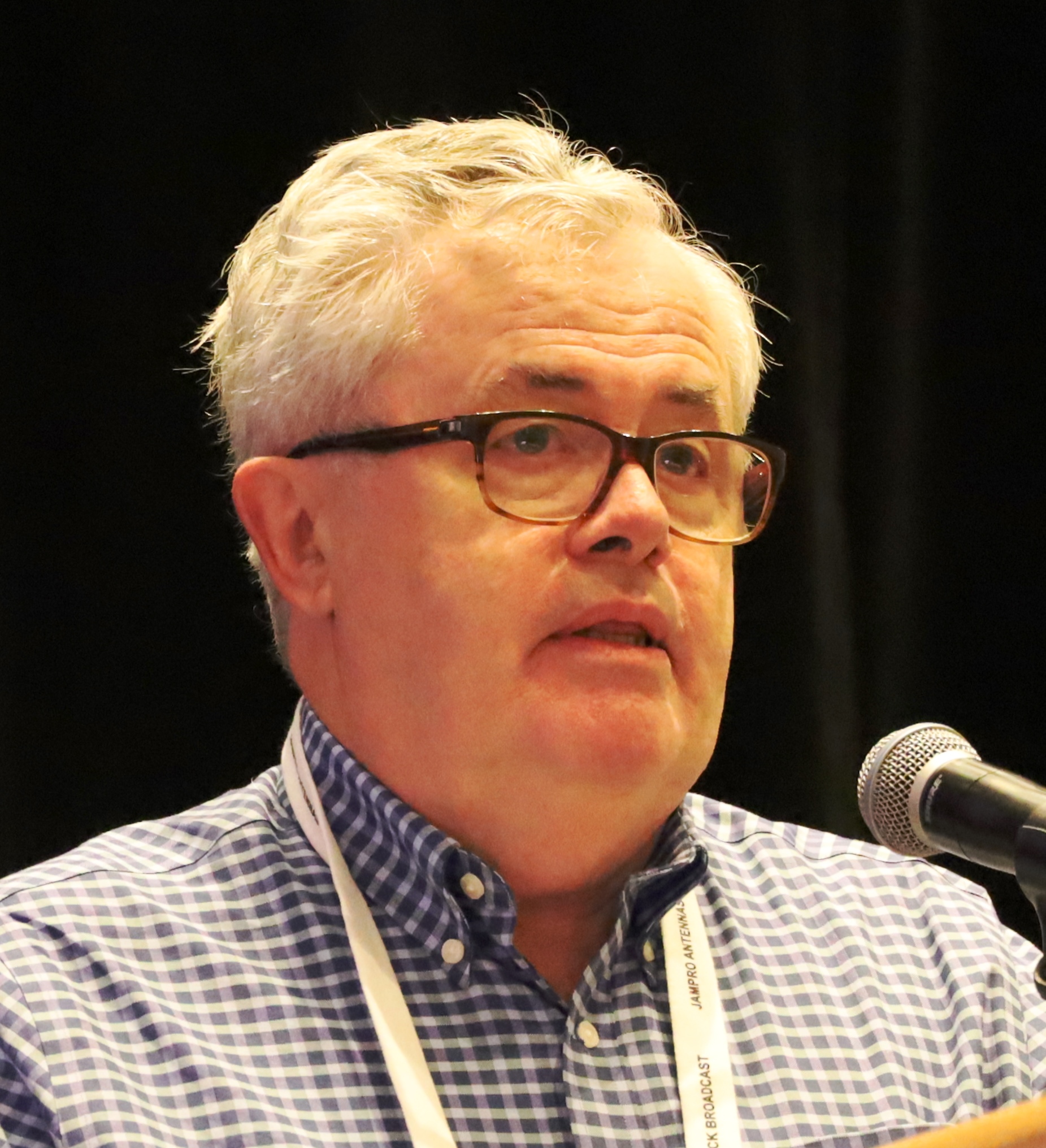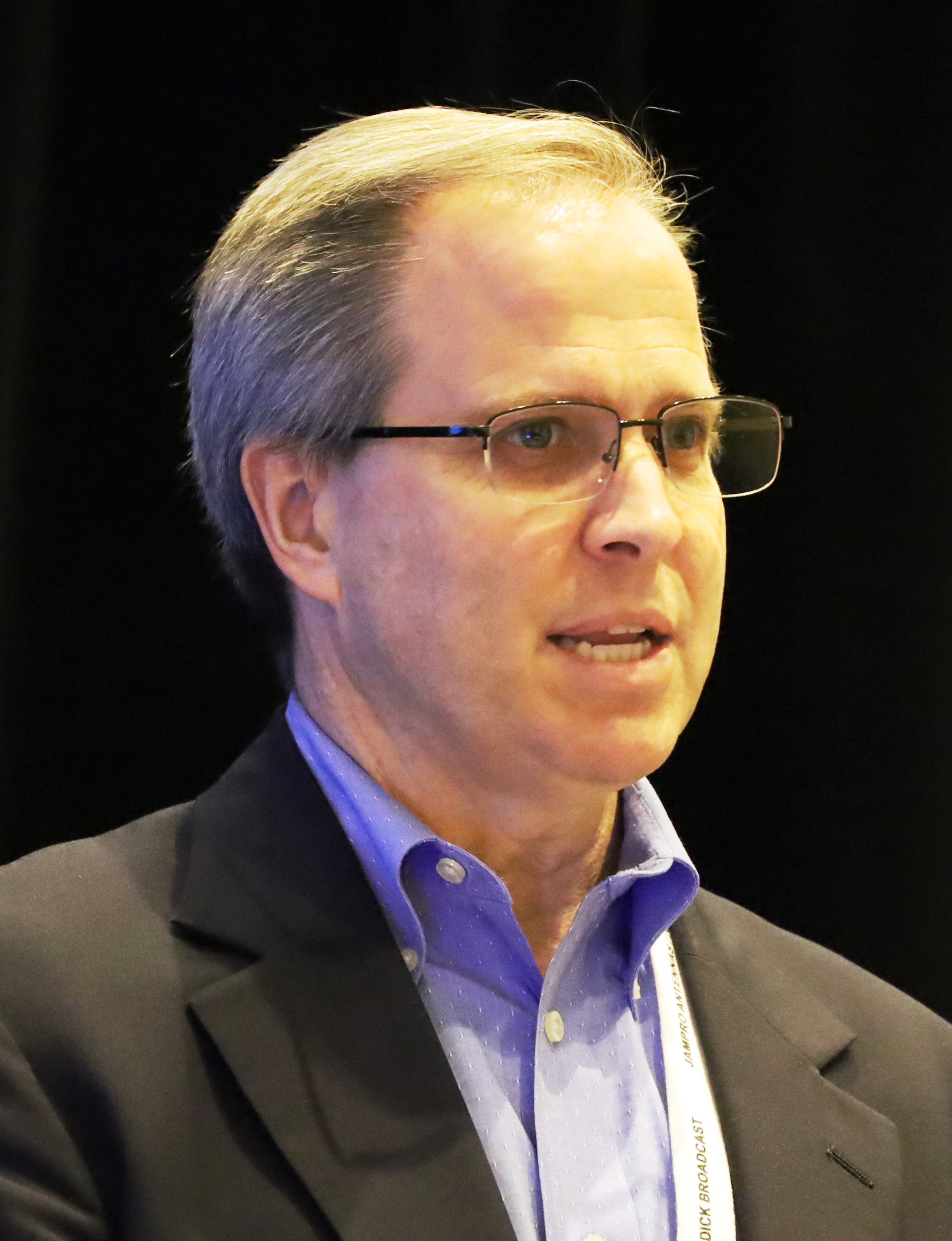NEXTGEN TV, 5G Take Center Stage at BTS Symposium
HARTFORD, Conn.—Television was again center stage at this year’s IEEE Broadcast Technology Society Broadcast Symposium, with nearly two-thirds of the presentations involving video. ATSC 3.0, or as it has been recently branded by the Consumer Technology Association, NEXTGEN TV, was in the limelight, with the final day of the Oct. 1-3 conference set aside for 3.0 presentations.

Leading off was Michael E. Bouchard, vice president of technology strategy for ONE Media at Sinclair Broadcast Group, who prognosticated as to how NEXTGEN TV and 5G technologies could work together in a mutually beneficial way.
“OTT is on the rise and 82% of internet traffic will eventually be video,” said Bouchard. “The consumer’s use of video on the internet is driving this exponential growth, and there’s nothing to indicate that this will end anytime soon. More and more broadcasters are moving their broadcasting to over-the-top. We’re loading these networks as they’ve never been loaded before. But we’re also becoming more and more dependent on a network that we don’t control, and mobile networks are becoming choked. Coverage is also poor in rural areas.”
Bouchard noted that while 5G may offer a lot of advantages not present in current wireless broadband systems, it may not be the universal panacea that many are promising, as under certain high-demand content viewing conditions, its unicast delivery mode can saturate. He suggested that if 5G and broadcast joined forces this would allow traffic to be offloaded for over-the-air delivery to phones equipped with 3.0 chips.
“[Such a] 5G converged network utilizes the superior features of IP-based terrestrial transmissions [and] it utilizes the unicast mode networks that are already in place,” said Bouchard. “It delivers data seamlessly across different technologies.”
Such a converged network would also benefit wireless broadband providers by extending their reach into rural areas and cutting system buildout costs, according to Bouchard.
“With the millimeter wave technology [that’s proposed for 5G], you need a tower every 200 to 300 feet,” said Bouchard. “How are you going to do that for Interstate 90 that goes from Boston to Seattle? Or better yet, how are you going to do that where I live in Hunt Valley, Md., where it’s horse country and every house has 40 acres?”
Get the TV Tech Newsletter
The professional video industry's #1 source for news, trends and product and tech information. Sign up below.
He views a plan where broadcasters could “rent out” some of their ATSC 3.0 bits to telcos as being a “win-win” for both.
“It would reinvent, extend and reinvigorate DTT broadcast TV, better enable telcom ecosystems, increase use of DTT spectrum and increase overall throughput efficiencies,” said Bouchard, noting that experimentation on such a converged ATSC 3.0/5G system are taking place in New Jersey and South Korea.
PHOENIX CONTINUES TO RISE
Dave Folsom, consultant to Pearl TV’s Phoenix 3.0 model market project, noted that there are now 12 stations and several television station groups participating in Phoenix, as well as a number of broadcast and consumer equipment manufacturers.
“A whole host of companies are providing enabling technologies behind the scene,” said Folsom. “Part of the mission is to evangelize … to ensure that all manufacturers of transmission and receiving equipment believe that the standard is going to be implemented. We have to come up with use cases, and test those use cases to show that there is consumer receiver demand.

“Manufacturers need a little bit of incentive that there will be a market; that broadcasters will be broadcasting in major markets,” Folsom added. “We don’t want to just replicate ATSC 1.0; otherwise there’s not a lot of incentive for viewers or receiver manufacturers.”
Other goals include demonstrating secure delivery of content and ensuring that the viewing audience served by MVPDs can access 3.0 signals.
“We’ve had a lot of discussions with MVPDs about moving forward, and hope to do testing with Phoenix MVPDs soon,” he said.
Folsom said that a professional ATSC 3.0 IRD is now available and that three television set manufacturers, and possibly more, should be making 3.0 sets available in the United States in 2020.
ATSC 3.0 FROM AN MVPD’S VIEWPOINT
As U.S. broadcasters move closer to a widespread ATSC 3.0 rollout, providers of cable and satellite systems are also laying plans to accommodate the new signals and services. Steve Watkins, executive director of Strategic Technology Policy at Cox Communications, described some of the challenges the cable industry faces by accommodating broadcasters’ ATSC 3.0 services.
“There’s a lot that has to happen when ATSC 3.0 is received by cable and satellite operators,” said Watkins, observing that 3.0 carriage will require restructuring and changes in multiple areas, including reception of program streams from broadcasters, signal processing, distribution to customers, set-top boxes and more. Watkins also foresaw difficulties arising from the many choices and possibilities inherent in the ATSC 3.0 signal itself.
“There’s apt to be customer confusion,” he said. “The AC-4 audio format provides additional language capability, music tracks, a means for providing increased separation between dialog and background audio, and immersive audio provides an increased number of audio channels that people will have to deal with.”
Watkins noted that such choices could be bewildering to some cable customers when difficulties arise, and asked “Who will be there to field questions and complaints?”
In the area of processing, Watkins said that 3.0 implementation will require new encoding and multiplexing schemes, a rework of failover/redundancy solutions to maintain continuity of operations in the event of a signal loss on primary feeds from broadcasters, and even new slate generators.

“Who converts the ATSC 3.0 service to provide ATSC 1.0?” he mused. “Where will it be done—at the broadcaster’s facility, or at the cable facility? Also, does the cable operator participate in the zoning or geotargeting that 3.0 enables? Cable systems typically are not equipped for this.”
Watkins noted that even though mandatory carriage of NEXTGEN signals will not be required “for at least another seven years, if the broadcasters come up with something that’s compelling and our customers want it, we want to be able to deliver it.”
MANUFACTURING FACILITY TOURS
Attendees to the 2019 BTS Symposium were also treated to pre-conference tours of the RFS RF component production facility in Meriden, Conn., and the Hitachi Kokusai Electric Comark operation in Southwick, Mass., where they were briefed on that company’s Comark Digital Services initiative for assisting broadcasters who wish to move to the NEXTGEN TV platform.
For a comprehensive source of TV Technology’s ATSC 3.0 coverage, see ourATSC3 silo.
James E. O’Neal has more than 50 years of experience in the broadcast arena, serving for nearly 37 years as a television broadcast engineer and, following his retirement from that field in 2005, moving into journalism as technology editor for TV Technology for almost the next decade. He continues to provide content for this publication, as well as sister publication Radio World, and others. He authored the chapter on HF shortwave radio for the 11th Edition of the NAB Engineering Handbook, and serves as editor-in-chief of the IEEE’s Broadcast Technology publication, and as associate editor of the SMPTE Motion Imaging Journal. He is a SMPTE Life Fellow, and a Life Member of the IEEE and the SBE.

